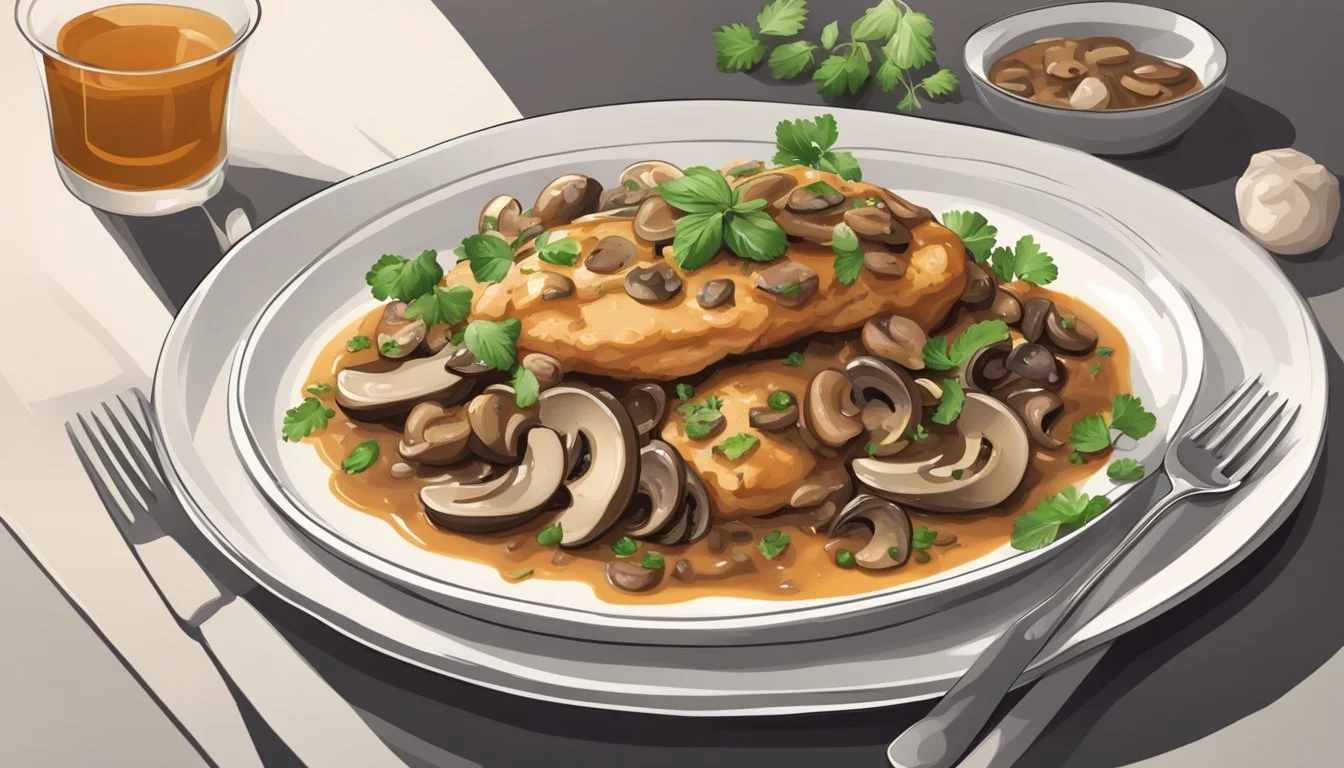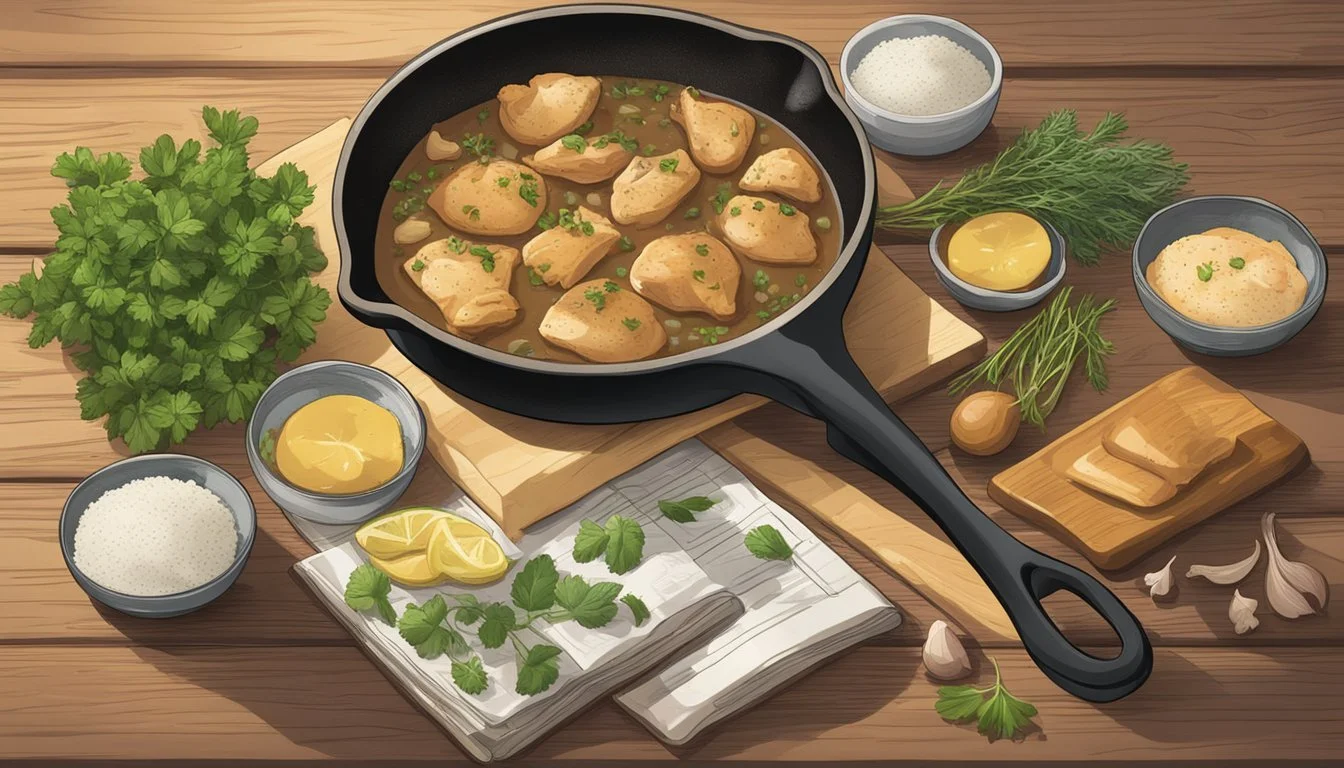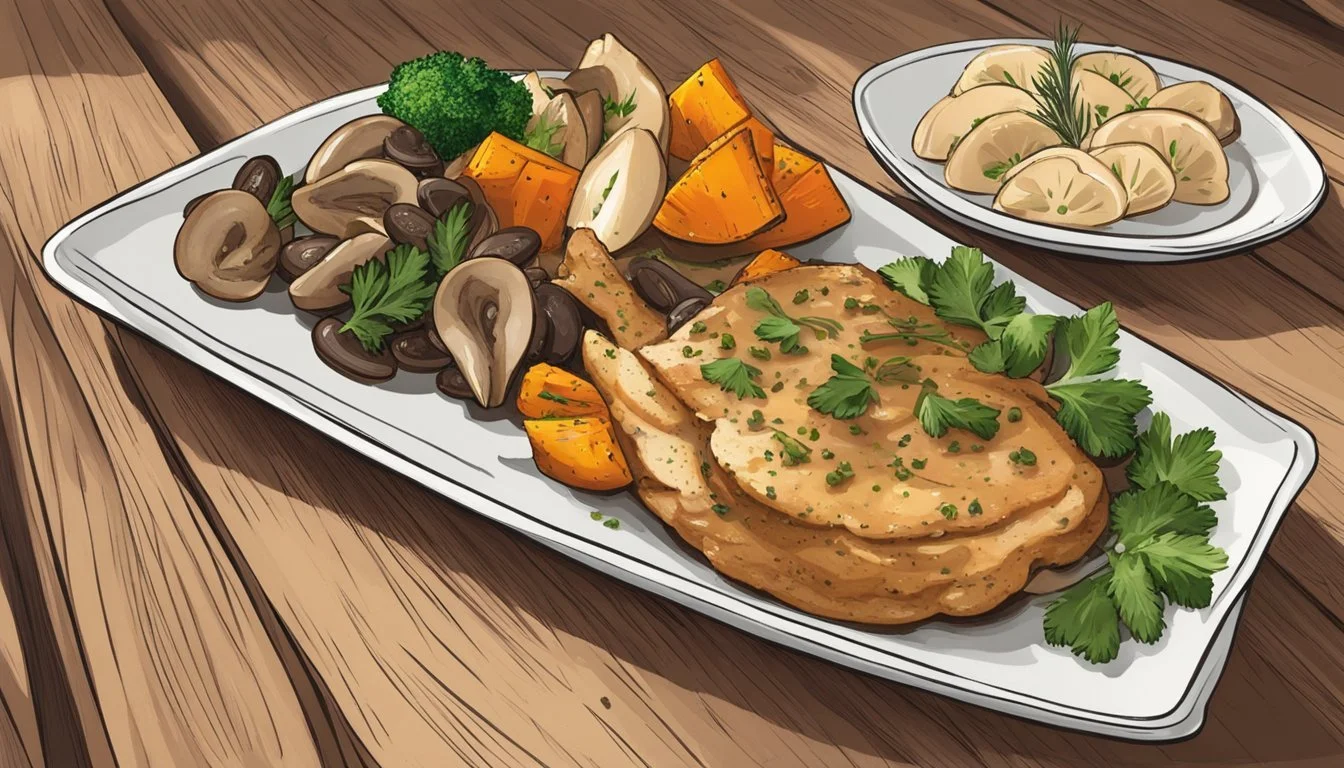How Long Does Gluten-Free Chicken Marsala Last?
Storage Tips and Shelf Life
For those with gluten sensitivities or looking to avoid gluten, gluten-free chicken marsala offers a delightful and safe alternative. This dish, known for its flavorful combination of tender chicken breast and rich marsala wine sauce, is not only simple to prepare but also stores well. Gluten-free chicken marsala can last in the refrigerator for up to 3-4 days when stored properly in an airtight container.
To ensure the best taste and safety, it's important to reheat the chicken marsala thoroughly before consuming any leftovers. The rich flavors of the marsala wine and tender chicken breast maintain their appeal even after being stored, making it a convenient meal option for busy weeknights. For those who enjoy meal prepping, gluten-free chicken marsala can also be frozen; it should be consumed within 2-3 months for optimal quality.
With its combination of gluten-free flour-coated chicken and savory sauce, this dish not only caters to dietary needs but also offers a satisfying and elegant dining experience. Whether enjoyed fresh or as leftovers, gluten-free chicken marsala remains a versatile and delicious choice that suits various schedules and dietary preferences.
Gluten-Free Chicken Marsala Overview
Gluten-Free Chicken Marsala is a tasty Italian-American dish known for its savory and rich flavors.
Ingredients commonly used include chicken breasts, gluten-free flour, mushrooms, garlic, marsala wine, chicken broth, and butter or dairy-free alternatives like ghee or olive oil.
Chicken breasts are coated in gluten-free flour mixed with seasoning before being pan-fried until golden brown.
Mushrooms and garlic are then sautéed until soft, creating a flavorful base for the sauce.
Marsala wine and chicken broth are added to the pan, simmering to form a rich sauce that coats the chicken.
The result is tender chicken with a succulent, creamy marsala sauce. While classic recipes use butter, variations exist for those avoiding dairy.
This dish is both gluten-free and can be made entirely dairy-free, catering to various dietary needs. It pairs well with pasta, potatoes, or even mixed vegetables as a side.
Health and Nutrition Profile
Gluten-free chicken marsala offers a healthy option without sacrificing flavor. It’s important to look at its caloric and macronutrient content, the key vitamins and minerals it provides, and the dietary considerations it addresses.
Caloric and Macronutrient Content
A serving of gluten-free chicken marsala typically has around 350-400 calories. It is generally high in protein, providing approximately 30-35 grams per serving.
The dish has moderate fat content, including both monounsaturated and polyunsaturated fats, with saturated fat usually under 5 grams. A standard serving may have 1-2 grams of carbohydrates, depending on the recipe specifics. Gluten-free chicken marsala is typically low in trans fats.
Mineral and Vitamin Composition
This dish is a good source of essential minerals and vitamins. Potassium levels can be around 300-400 mg per serving, which supports heart health.
It also provides notable amounts of iron and calcium—important for blood and bone health, respectively. Additionally, it often contains vitamin A for vision and immune function and vitamin C for skin health. The sodium content can vary but is usually kept moderate to control blood pressure.
Dietary Considerations
Gluten-free chicken marsala is suitable for those with gluten intolerance or celiac disease, ensuring it causes no adverse reactions.
For those following a dairy-free diet, many recipes exclude dairy, making it accessible.
Moreover, it typically contains low to moderate levels of cholesterol, fitting into heart-healthy diets. With gluten and dairy omitted, it provides a versatile option for those with dietary restrictions. Care should be taken for those monitoring sodium intake, as the levels can vary with different recipes.
Preparation Techniques
Using the right methods can ensure that your gluten-free Chicken Marsala is both delicious and safe to eat. Particular attention is given to selecting appropriate ingredients and applying effective gluten-free cooking techniques.
Selecting Quality Ingredients
Skinless, boneless chicken breasts are essential for this dish. They should be fresh and of good quality to ensure tenderness and flavor. When selecting baby bella mushrooms and fresh parsley, choose ones that are firm and free from blemishes. Dry Marsala wine is another key component; using a quality wine will significantly enhance the flavor of the dish.
For the coating, opt for gluten-free flour alternatives such as tapioca flour, cornstarch, or arrowroot starch. These not only provide a crispy texture but also cater to gluten-sensitive individuals. Fresh garlic and good quality olive oil can enhance the overall flavor, making the dish more savory and rich.
Gluten-Free Cooking Tips
To achieve a perfect sear, pound the chicken breasts to an even thickness. This ensures uniform cooking and prevents dryness. Heat olive oil in a skillet over medium-high heat. The oil should be hot before adding the chicken to reduce sticking and create a golden crust.
For the mushroom sauce, sauté sliced baby bella mushrooms until they are tender. Adding a slurry made from gluten-free starch (like cornstarch or tapioca flour) mixed with water helps to thicken the sauce without gluten. Simmer the mixture with dry Marsala wine until it reduces and flavors meld.
Serve the chicken Marsala with gluten-free pasta or rice for a complete meal. Keeping the chicken warm in the oven at a low temperature ensures it stays crispy until you're ready to eat. Using fresh ingredients and proper techniques guarantees a delicious and safe gluten-free Chicken Marsala.
Cooking and Recipe Guide
Cooking gluten-free chicken marsala requires careful attention to selecting the right ingredients and following specific steps to ensure a savory and tender dish. Here is a detailed guide to help you prepare the perfect gluten-free chicken marsala.
Step-by-Step Instructions
Begin by gathering chicken breasts, gluten-free flour, salt, pepper, and olive oil. Mix the flour with salt and pepper in a shallow dish. Dredge each chicken breast in the flour mixture until fully coated.
Heat a large skillet over medium heat and add olive oil. Once hot, place the dredged chicken in the skillet and cook until golden brown, approximately 6-8 minutes per side. Remove the chicken and set aside.
In the same skillet, add butter and minced garlic, cooking until fragrant. This creates a flavorful base for the sauce.
Sauce Preparation
For the marsala sauce, add sliced mushrooms to the skillet and cook until they release their moisture and become tender. This usually takes about 10 minutes.
Add a mix of chicken broth and dry marsala wine to the pan. Simmer this mixture, allowing it to reduce slightly. Stir frequently to incorporate the browned bits from the chicken, which add depth to the sauce.
Once the sauce thickens to a creamy consistency, return the chicken to the skillet. Let it simmer in the sauce for an additional 5-7 minutes, ensuring the chicken absorbs the rich flavors.
Gluten-Free Marsala Wine Selection
It is important to choose gluten-free marsala wine. Not all marsala wines are gluten-free, so check the labels for certification.
For those avoiding alcohol, dry sherry can serve as a good substitute, offering a similar robust flavor. Marsala cooking wine is also an acceptable alternative, though it may contain added sodium or other preservatives.
Using a high-quality wine is essential for achieving that authentic, rich marsala flavor in the sauce.
Carefully following these instructions will result in a tender and flavorful gluten-free chicken marsala, perfect for any occasion.
Storage and Shelf Life
To ensure gluten-free chicken marsala remains safe and flavorful, proper storage is crucial.
Place the dish in an airtight container before refrigerating. When stored correctly in the refrigerator, gluten-free chicken marsala can last for up to 3-4 days. Make sure the temperature is consistently at or below 40°F (4°C) to prevent bacterial growth.
For extended storage, you can freeze the chicken marsala. Use a sturdy, airtight container or wrap it tightly in aluminum foil and then place it in a freezer-safe bag. In the freezer, gluten-free chicken marsala can be stored for up to 3 months.
When reheating, ensure the dish reaches an internal temperature of 165°F (74°C) to be safe for consumption.
Serving Suggestions
For a delightful dining experience, enhancing gluten-free chicken marsala with thoughtfully chosen sides and beverages is essential. The right accompaniments can complement the rich, savory flavors and create a balanced, memorable meal.
Appropriate Sides
Pair gluten-free chicken marsala with rice or cauliflower rice for a light yet satisfying option. Both absorb the marsala sauce well and add texture.
Another excellent choice is pasta or gluten-free noodles, which harmonize with the dish's creamy mushroom sauce. For something heartier, mashed potatoes provide a comforting base that soaks up every bit of flavor.
For vegetables, consider oven-roasted asparagus or broccoli. Their slight crispness and fresh taste balance the richness of the chicken marsala, adding color and nutrients to the plate.
Pairing with Beverages
When selecting drinks to accompany gluten-free chicken marsala, consider marsala wine or white wine to enhance the dish’s mushroom and chicken flavors. A medium-bodied white wine like Chardonnay complements the creamy sauce without overpowering it.
Sparkling water with a slice of lemon or lime offers a refreshing non-alcoholic option, perfect for lunch or casual dinners. For a more robust pairing, a light Italian red wine can also work well, adding depth and complexity to the meal.
These thoughtful pairings ensure a well-rounded dining experience, perfect for dinner parties or casual weeknight meals.







